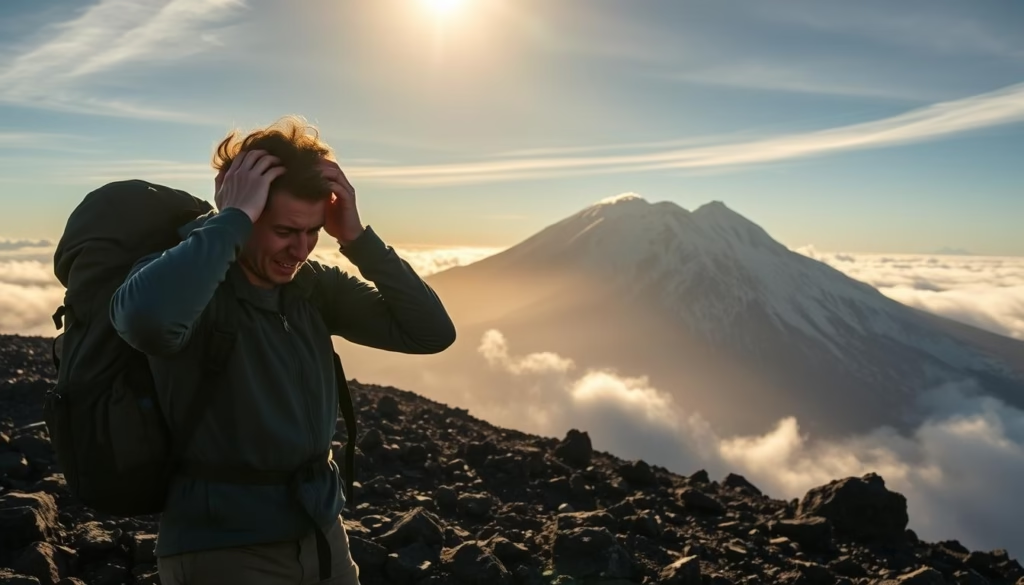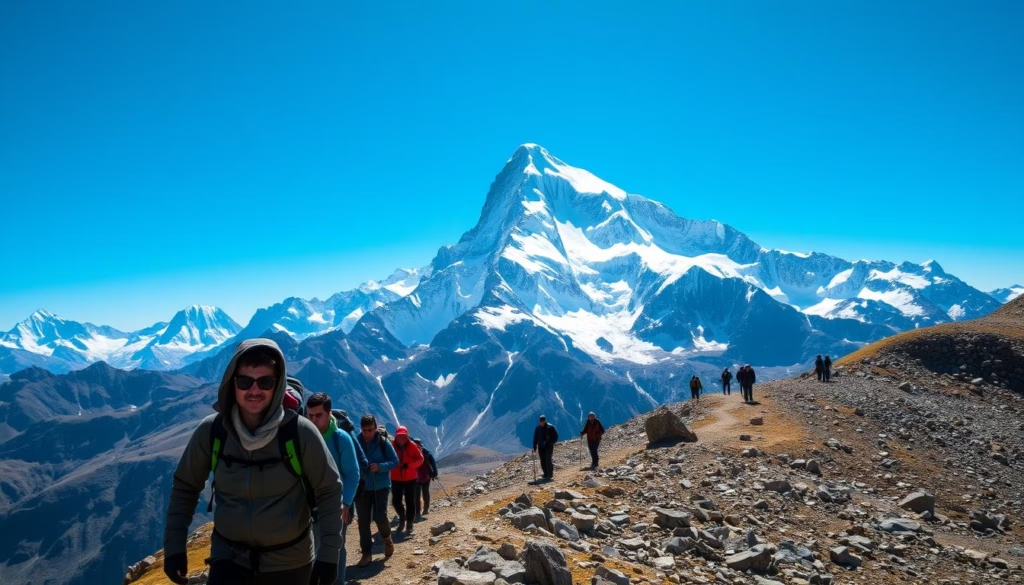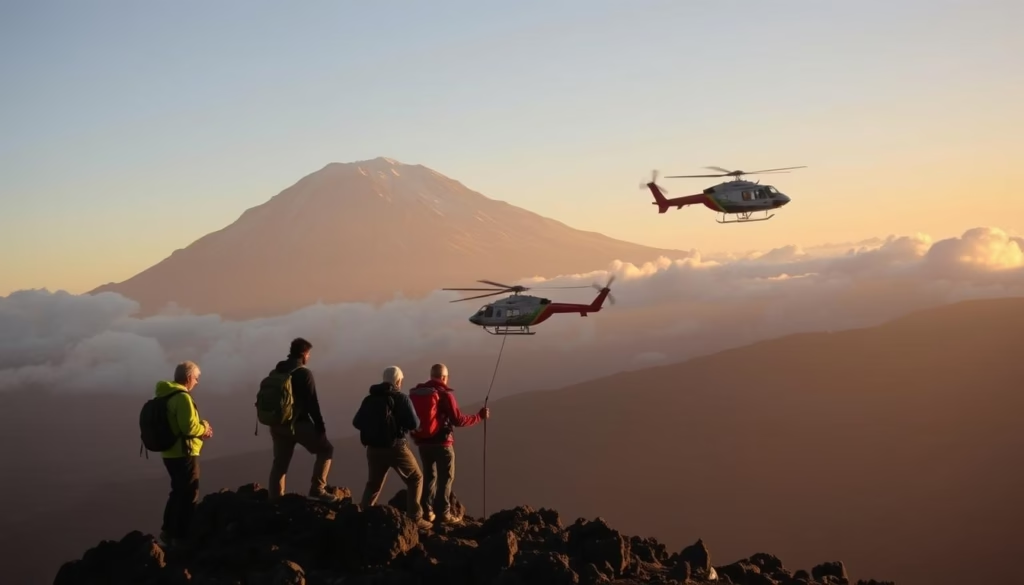Ready to risk a summit bid without a plan for altitude emergencies? Climbers from the United States face unique costs and medical risks on this seven summits goal. At 19,341 ft (5,895 m), Uhuru Peak pushes many standard policies past their wording and limits.
You need a purpose-built policy that covers the whole trip, not just the hiking days. Typical climbs run 5–9 days; longer itineraries help with acclimatization. Many plans cap hiking at about 13,123 ft (4,000 m), while some extend to 19,685 ft (6,000 m). No policy covers higher.
Buy early to protect deposits, meet operator proof requirements, and lock in medical waivers. Look for clear altitude wording, strong benefits, and services that coordinate evacuations and care near the peak. This guide shows what risks to insure, which coverage limits to target, and how to compare plans side-by-side.
Key Takeaways
- Why Kilimanjaro climbers from the United States need specialized travel insurance
- mount kilimanjaro travel insurance: essential coverage requirements
- What a solid policy should include beyond the mountain
- How to choose and compare plans for a Kilimanjaro climb
- Costs, timing, and practical buying tips for your trek
- Conclusion
- FAQ
- Choose a policy that covers the full trip and high-elevation hiking.
- Confirm altitude limits match a summit bid near 19,341 ft.
- Longer itineraries improve acclimatization and reduce claims risk.
- Buy early to protect payments and meet operator requirements.
- Prioritize clear wording, strong benefits, and 24/7 rescue services.
Why Kilimanjaro climbers from the United States need specialized travel insurance
High-elevation trekking creates a unique risk profile that standard plans seldom anticipate. Climbers from the United States face altitude illness, sudden storms, and evacuation needs that can become expensive fast.
Real risks on a high-altitude trek: sickness, injury, weather, and delays
Altitude sickness can begin around 6,000 ft and progress quickly. Injuries from uneven terrain and rapid weather swings are common on steep routes.
Logistical delays — missed flights, route closures, or extended acclimatization — ripple into lodging and connection problems. Coverage for emergency medical care and evacuation protects the parts of a trip most likely to cost thousands of dollars.

Operator requirements and proof of coverage
Many reputable tour companies require verified proof of coverage before permitting a climb. Some operators will deny participation without documentation that meets the activity level.
U.S. residents should expect plans to include trip cancellation, interruption, missed connections, baggage, emergency medical, evacuation, and repatriation. Note that services and plan terms can vary by state, so two friends in different states may see different options.
Confirm your policy lists high altitude trekking up to 6,000 m to satisfy mountain rescue services and operator checks. For details and plan comparisons, see Kilimanjaro travel insurance.
mount kilimanjaro travel insurance: essential coverage requirements
Not all plans treat high-elevation hiking the same. Read altitude wording to confirm your policy explicitly includes high altitude trekking to 19,685 ft (6,000 m). Many plans offer coverage only to about 13,123 ft (4,000 m).

Activity definitions and exclusions
Declare the correct activity: standard routes are trekking and hiking without ropes or crampons. Calling a trek “mountaineering” can trigger exclusions or higher premiums.
Emergency medical, evacuation, and repatriation
Choose a policy with strong emergency medical limits plus evacuation and repatriation that cover ground and air from high camp to a capable hospital and home.
Helicopter rescue realities
“Helicopter rescues can take around four hours, and costs run near US$8,000; some services require verified coverage to start an evacuation.”
| Requirement | Why it matters | What to check |
|---|---|---|
| Altitude wording to 6,000 m | Satisfies rescue verification and protects summit bids | Policy language, schedule of benefits |
| Activity definition | Avoids voided claims or premium surprises | Declared activity = trekking/hiking |
| Evacuation & repatriation limits | Covers costly air/ground moves and repatriation home | Dollar limits, service coordination, payment terms |
Document your route and dates, confirm which plans offer high-elevation cover, and verify exclusions for technical climbing so your claim stays valid.
What a solid policy should include beyond the mountain
A strong policy goes beyond rescue and medical limits to protect the many pre- and post-climb risks that derail a trip.
Trip cancellation and interruption: choose a plan that reimburses deposits and prepaid costs for training injuries, sudden sickness, or severe weather. Operator refunds are often limited; a robust policy protects your investment and peace of mind.
Missed connections and travel delays
Missed flights or long delays can eat acclimatization days and add hotel or rescheduling fees. Look for benefits that cover extra nights, rerouting, and essential costs when delays affect your itinerary.
Baggage delay and personal items
Essential hiking gear arriving late can force rentals or replacements. Coverage for baggage delay and lost personal items eases those out-of-pocket expenses before the tour begins.
Financial default, terrorism, and other safeguards
Financial default and terrorism benefits protect you if a supplier collapses or geopolitical events disrupt air routes or a tour operator. These protections are a small but important part of global trip planning.
- Check pre-existing condition waivers and buy promptly after paying deposits to qualify.
- Verify how emergency medical and repatriation work in-town and for return home if recovery takes longer than planned.
- Choose providers known for clear service and fast claims handling; customer support matters.
| Protection | Why it matters | What to save |
|---|---|---|
| Trip cancellation/interruption | Protects deposits and prepaid costs | Receipts, medical notes, operator invoices |
| Missed connection/travel delay | Covers extra nights and reroutes | Airline delay notices, boarding passes |
| Baggage delay & loss | Replaces essential gear | Property reports, receipts |
How to choose and compare plans for a Kilimanjaro climb
Start by reading the fine print: altitude caps and activity definitions decide whether a claim is valid. Verify that the policy explicitly lists high-elevation trekking to your planned level and that it only excludes technical climbing not used on standard routes.
Compare payment terms and deductibles. Confirm whether the company pays providers directly for rescues and hospital bills or expects you to pay and file for reimbursement. That matters if a helicopter or ground rescue is needed.
State availability and timing
U.S. residents should check state-by-state plan differences. Some plans vary by state and may not offer the same benefits everywhere.
Buy within the typical 10–15 day window after booking to qualify for pre-existing condition waivers. Some operators recommend Travel Guard’s Preferred plan with a Cancel For Any Reason upgrade.
Recommended features and documentation
- Strong medical and evacuation limits, plus 24/7 assistance and rescue coordination.
- Cancel For Any Reason for flexibility when plans change.
- Keep medical notes, airline delay statements, outfitter invoices, and guide communications to support claims.
Before you climb, call your provider and get written confirmation that your route, dates, and activities are covered. Save copies of policy pages that show altitude and activity wording.

| Check | Why it matters | What to save |
|---|---|---|
| Altitude & activity wording | Determines claim eligibility | Policy pages, email confirmation |
| Deductible & payment method | Impacts out-of-pocket cost during rescue | Benefit schedule, call notes |
| Pre-existing waiver window | May preserve cancellation benefits | Booking date, purchase receipt |
Costs, timing, and practical buying tips for your trek
Buy a plan as soon as you reserve your spot. Doing so often unlocks pre-existing condition waivers and fixes policy dates to cover flights, staging, and recovery days.
When to buy:
Secure coverage right after booking
Operators advise purchasing within 10–15 days of your deposit. That window commonly triggers medical waivers and prevents gaps between your booking and your policy start date.
Budgeting for premiums
Plans that include high altitude trekking cost more. Underwriters price policies higher because medical evacuations from remote routes are expensive and risky.
- Budget for the full trip calendar—flights, layovers, staging days, summit day, and post-trek recovery.
- Compare companies on assistance services, claims reputation, and whether plan language explicitly lists what the plan offers at altitude.
- Check state-specific availability and member enrollment rules before purchase.
| Cost factor | Why it matters | Practical tip |
|---|---|---|
| High-altitude coverage | Raises premiums due to evacuation and medical risk | Confirm altitude limits in the policy wording |
| Trip duration | Longer trips increase exposure and claim window | Buy a policy that covers all days, not just summit day |
| State rules & provider | Benefits and pricing can vary by home state | Compare plans available to your state before buying |
| Assistance services | Quality affects rescue coordination and claim speed | Check reviews and call the company to test response |
Final tips: set reminders for final payments and CFAR deadlines. Keep PDFs, ID cards, and assistance numbers on your phone and share policy details with your guide so on-route teams can coordinate service if sickness or an evacuation occurs.
Conclusion
Secure policy wording and service contacts before you fly; gaps show up fastest on summit day.
For U.S. climbers, choose travel insurance that explicitly covers high altitude trekking up to 6,000 m and names your planned activities. Confirm whether helicopter rescues (often near US$8,000) require verified coverage before activation.
Pick comprehensive cover that includes emergency medical, evacuation and repatriation plus strong trip protections from the first day to your return home. Read the policy end-to-end and save pages that show altitude and activity wording.
Align limits with real trip costs, get written confirmation for summit-day coverage near Uhuru Peak, and keep member and service contacts handy for your guide and on-mountain team. For plan comparisons and details, see Mount Kilimanjaro travel insurance.
FAQ
Why do climbers from the United States need specialized insurance for a high-altitude trek?
Climbs above 6,000 m carry unique risks: altitude illness, storm-related delays, and remote medical evacuation. U.S. residents should choose plans that explicitly cover high-altitude trekking, emergency evacuation, and repatriation so guides and tour operators accept proof of cover before the trek.
What are the real risks on a high-altitude trek like this one?
Risks include acute mountain sickness, hypoxia, fractures from slips, rapid weather changes, and exhaustion. These hazards can lead to costly helicopter evacuations, extended stays in local hospitals, or trip interruption—so medical and rescue coverage is essential.
Will guides or operators require proof of coverage before I join the climb?
Yes. Many operators require documentation showing adequate medical and evacuation limits. They may refuse to let climbers start without it, so carry digital and printed policy details and emergency contact numbers for your insurer and rescue coordination service.
What does high-altitude trekking coverage typically include up to 19,685 ft (6,000 m)?
A suitable policy covers emergency medical treatment, helicopter or ground evacuation, repatriation, and inpatient hospital costs. Check policy wording for explicit altitude limits and any per-incident caps that could leave you underinsured at extreme elevations.
How should I declare my activity—trekking or mountaineering—to avoid exclusions?
Always declare the most accurate activity. If your route requires technical gear or roped sections, list it as mountaineering. Mislabeling can void claims, so read definitions in the policy and, if unsure, contact the insurer for written confirmation.
What emergency evacuation options are available and how expensive can they be?
Evacuations may use stretcher teams, jeep transfers to clinics, or helicopters. Helicopter rescues in remote areas can cost around ,000 or more. Policies should state response times, limits, and whether they cover repatriation to the U.S.
What should a solid policy include beyond mountain-specific cover?
Look for trip cancellation and interruption for illness or training injury, baggage and personal effects coverage, missed connections, travel delays, and protection against supplier failure. These controls help if problems occur before or after the climb.
Does trip cancellation cover training injuries or pre-trip sickness?
Many plans cover sudden sickness or injury that prevents travel, and some offer Cancel For Any Reason (CFAR) options for broader protection. Review eligibility windows and documentation rules to ensure claims for training injuries are accepted.
Will baggage loss or delay be covered while trekking and in cities?
Standard policies usually cover loss, theft, or delay of luggage and personal items both on the mountain and during transit. Check limits per item and whether equipment like cameras or trekking poles needs higher coverage or itemized declarations.
How do missed connections, supplier default, or terrorism coverage work for international treks?
Policies vary: travel delay and missed connection benefits reimburse extra transport and accommodation, while supplier default covers bankruptcy of tour operators. Terrorism coverage may be limited or excluded—confirm country-specific terms before booking.
How do I compare plans and what wording should I verify?
Compare altitude limits, activity definitions, evacuation and medical caps, exclusions, and fine-print clauses. Verify that “high-altitude trekking” or the specific peak elevation is listed and that rescue coordination services are included or available as an add-on.
What should I know about deductibles, payment types, and required documentation?
Check whether the policy requires upfront payment for evacuations or reimburses afterward. Note deductible amounts and document medical reports, receipts, and guide statements to support claims. Some insurers require prior approval for evacuations—carry emergency numbers.
Are policies available to all U.S. states and how do pre-existing condition waivers work?
Availability differs by state and insurer. Pre-existing condition waivers usually require purchasing within a specific window after trip payment and full disclosure of medical history. Read state-specific terms and timelines carefully to maintain coverage.
Which plan features are recommended for a serious climb?
Prioritize strong medical limits, generous evacuation coverage, CFAR if affordable, 24/7 emergency assistance, and rescue coordination. Higher limits reduce out-of-pocket risk if air evacuation or prolonged hospitalization becomes necessary.
When should I buy coverage after I book my climb?
Buy as soon as you pay nonrefundable deposits to secure pre-existing condition waivers and CFAR eligibility windows. Early purchase also protects against supplier failure and offers greater claim flexibility for unexpected events.
How should I budget for premiums for a high-altitude climb?
Premiums rise with altitude limits, trip cost, traveler age, and medical limits selected. Expect higher rates than standard vacations; factor rescue and evacuation coverage into the cost and compare several insurers to find the best balance of price and protection.